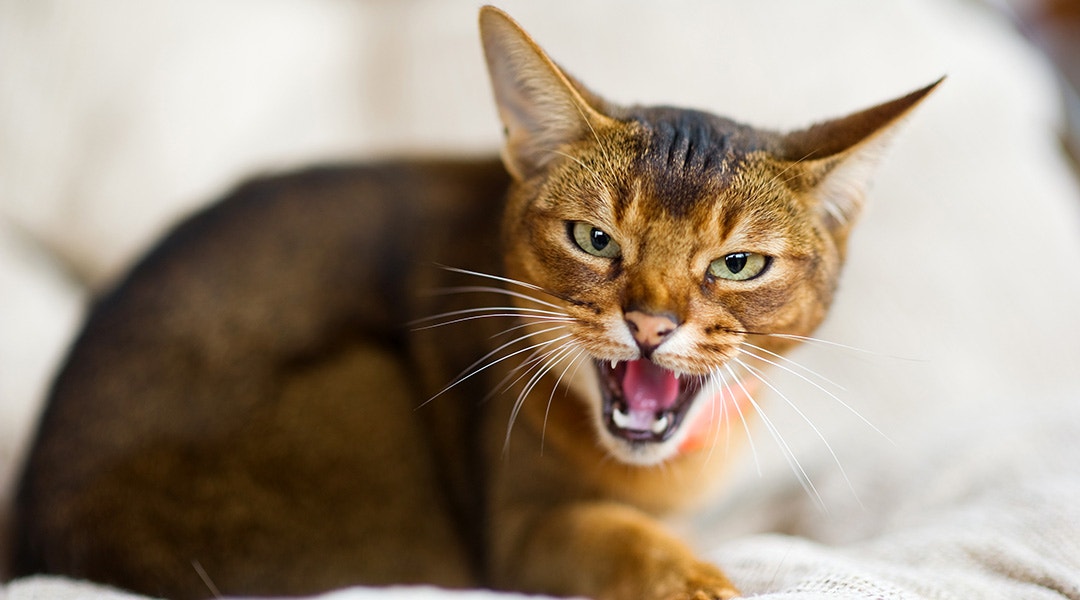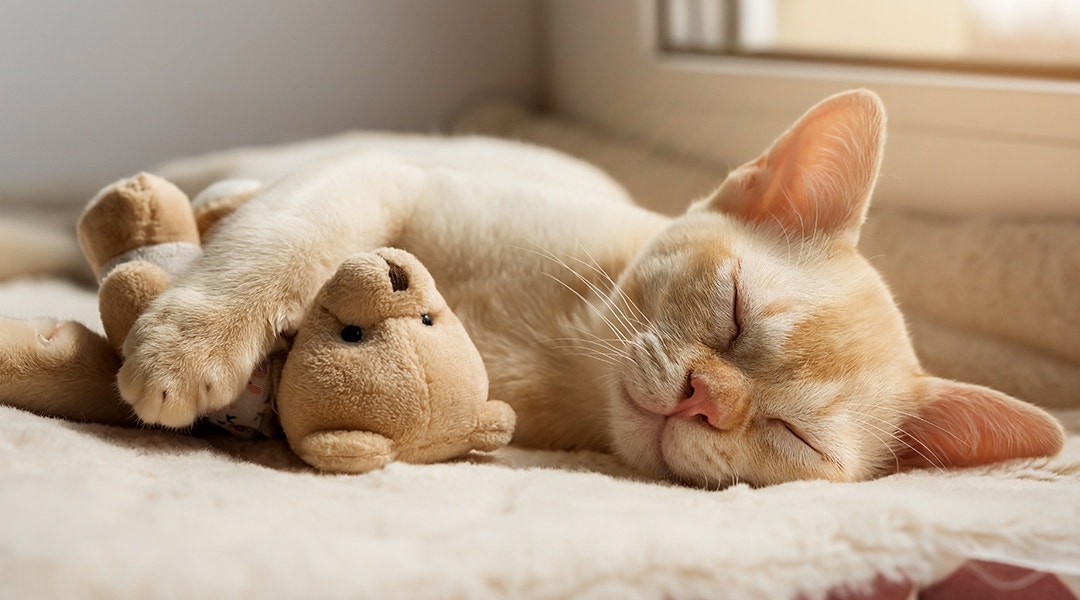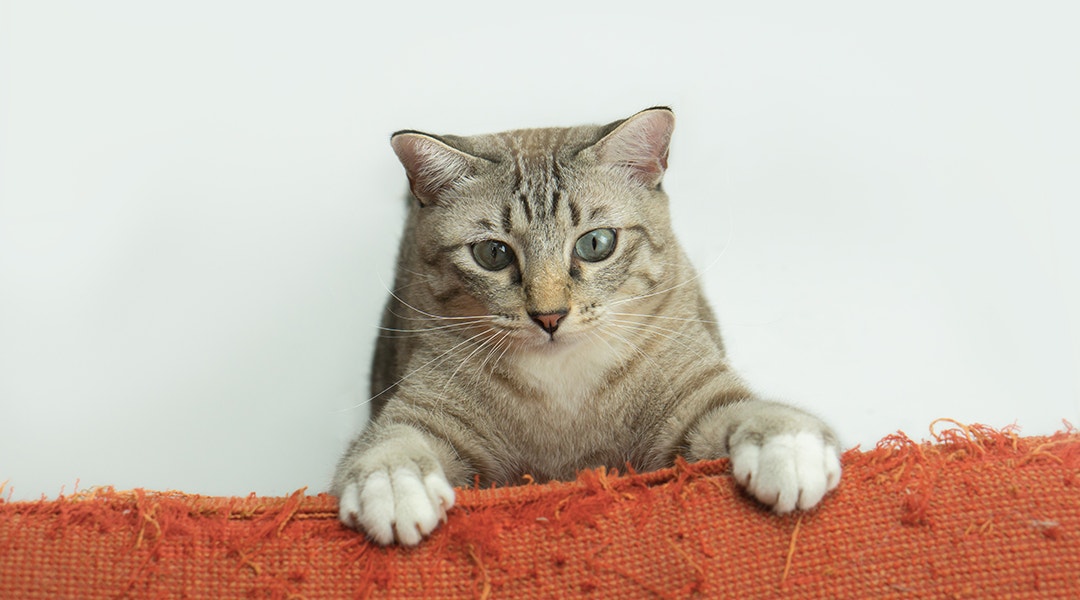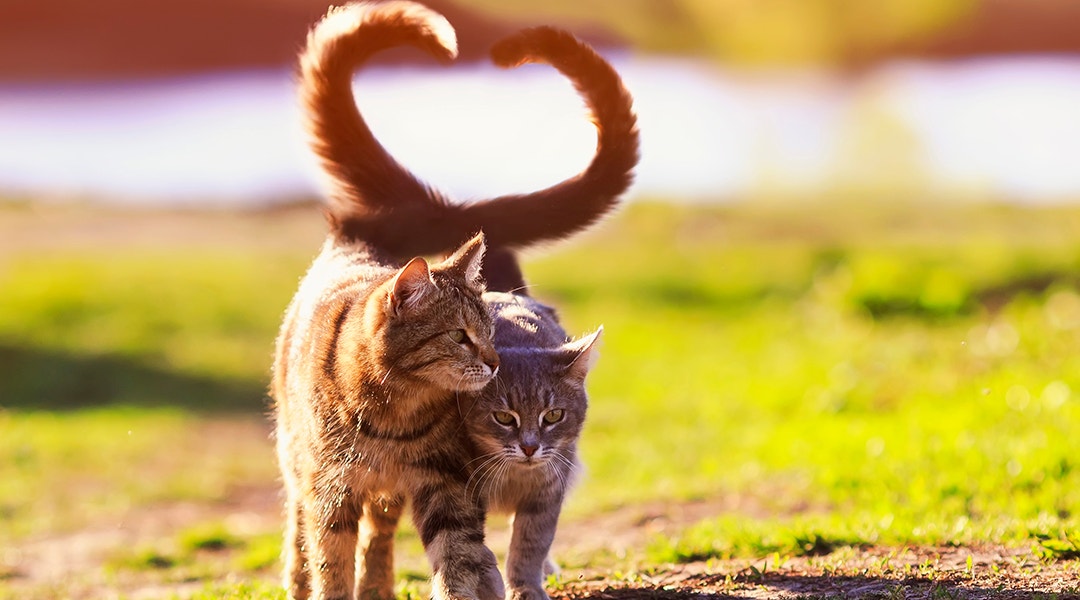All cat owners have experienced a defiant growl coming from their pets on occasion, usually during playtime, when they are guarding food or directed at other cats or pets, such as a cat growling at a new kitten. When a cat summons a growl it can send fear into even the most ardent of cat lovers! Cat growling can be hair-raising, but why do cats growl? This article will cover everything you need to know about its causes, meanings and how you should react, so you can defuse and decode any potentially hairy situations, quickly.
What does a cat's growling sound like?
Cat growling is best described as a guttural, throaty sound, it is usually low and grumbling in nature, as well as drawn out. Cats produce this sound from forcing air through their vocal cords and some may mistake it for purring at first, despite distinct differences. Purring is a much softer, comforting and continuous sound, compared to a harsher, drawn out and jarring growl. Growling may escalate to hissing and may be accompanied by paw swatting or other defensive body language, such as a puffed out tail.
Why do cats growl?
Cat growling occurs for a number of reasons, it is another vocalisation (others include meowing and purring) used to communicate negative emotions such as fear, anxiety, pain, aggression, overstimulation and territoriality. We will break down the causes below so you can understand your cat’s needs better.
Fear
Why do cats growl out of fear? Cats use this vocalisation to let their owners and other animals know they are feeling threatened by someone or something. They may growl to let you know they are feeling trapped or to communicate to other cats, pets and nearby animals that they need time to cool off. You will often hear your cat growling at other cats outside if they feel threatened by them. It could also be triggered by noises they do not like, such as a loud hoover or washing machine.
Aggression
Growling is also a sign of aggression, this may be caused by various reasons, such as handling or playing with your cat in a way they do not like. Aggressive growling can also be directed at humans or other pets and animals in their environment during disagreements. This is also more common in cats that have not been socialised well or have had a negative experience with humans. Be patient and always aim to defuse the situation, making sure you do not act aggressively back. Give them space to cool down or stop doing whatever may have triggered this behaviour.
Overstimulation
Why do cats growl when they are overstimulated? Growling is usually used as a warning sign to let you know they are feeling negative emotions. Cats may become overstimulated by excessive petting which causes sensory overload or even loud noises in their environment, such as the hoover or washing machine.
Territorial Disputes/Showing Dominance
Growling is often directed at other cats in your area during territorial disputes, as cats are very territorial animals. Your cat growling at a new kitten you have introduced into your home is another example. This is their way of showing dominance and warning other cats to back off and leave their territory, before a cat fight ensues. This can also be directed at strangers/other humans they do not feel safe with who have entered your home (their territory), this is usually more prevalent in cats that have not been socialised well.
Pain and Discomfort
Do cats growl because of an injury? Cats also growl when they are in pain or discomfort, this is why understanding their reasons for growling is so important. For example, if you touch your cat in a certain area or lift them up and they growl, it is a sign they may have hurt themselves or are feeling unwell. If you suspect your cat is growling due to an injury it is important that you take them to the vet for a check up.
Growling vs. other aggressive sounds
It is important to note that growling is usually a warning sign, this is your cat's way of saying “back off” because further aggression may ensue. It differentiates from other cat vocalisations.
- Meowing: meowing is a distinct vocalisation, all cat meows are unique but it is usually described as long, mid-length or short vocalisation used to gain attention or as a greeting. It may be used repeatedly if your cat is hungry or locked out.
- Purring: purring is used to show happiness and contentment, it is a soft, rhythmic and continuous sound.
- Yowling: a yowl is an intense, high pitched and drawn out sound. A yowl can be used for many reasons, it can indicate hunger, thirst, pain, boredom or stress. It can also be used to gain your attention and as a mating call.
- Hissing: Hissing is described as a prolonged, intense, sibilant sound, similar to the hiss of a snake or the steam from a kettle. Do cats growl for the same reasons as hissing? Yes, hissing is similar to a growl in the sense that it can denote pain, aggression, territoriality, overstimulation and fear.
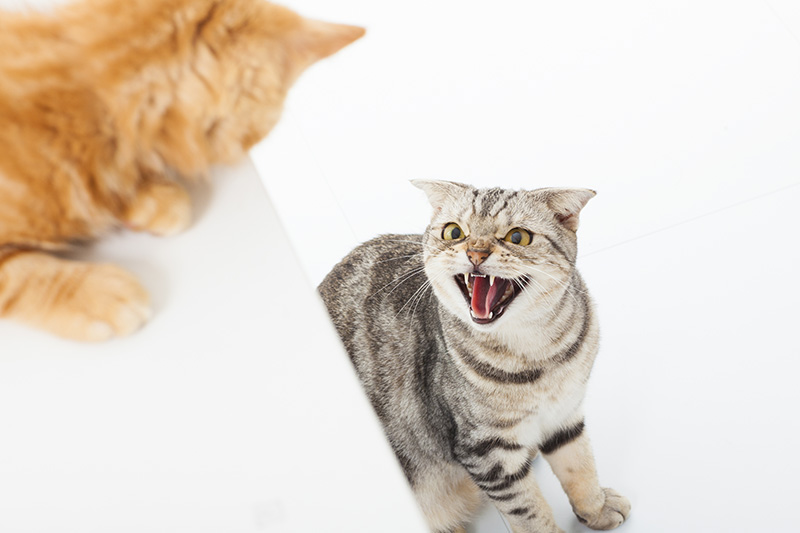
What your cat’s body language is telling you?
Understanding your cat's body language and what is happening in their environment that could be triggering them is key to decoding the reasons behind vocalisations such as growling. Make note of physical cues, such as flattened ears, tail flicking, arched back, stiff posture or a puffed out tail. This will ultimately help you resolve situations that may lead to your cat escalating aggression, namely biting or scratching. This is especially important if your cat is growling at a new kitten or a member of your family, such as a child. Giving them time and space to cool off and making sure the trigger of their growling is resolved is paramount to a happy cat. Did you know catnip can sometimes mellow cats out or make them feel more playful and energised?
How to respond when your cat growls
Follow our practical tips to defuse your cat’s growling swiftly and restore a happy home.
- Our number one tip is to step back and give your cat space, this is especially true if something you were doing, such as prolonged petting, has triggered cat growling.
- You should also avoid prolonged eye contact with your cat, such as staring them down after a growl. This can be perceived as a threat and may cause escalated aggression.
- Make sure you never scold your cat or punish them, simply observe the trigger and act accordingly. Punishing your cat may be harmful to your relationship and lead to further aggression.
- In order to defuse the situation you can remove the cat from the environment that has triggered them, such as separating animals, people or toys that caused the growling.
- Always remember that growling is a warning, as well as a form of communication and is not always indicative of aggressive cats. However it can escalate to aggression if the trigger is not identified and resolved.
When growling is linked to pain or illness
As mentioned previously, growling can sometimes indicate pain or illness, especially if it is sudden or unprovoked. Cats may growl if you touch them in an area they have injured, areas to be aware of include their stomach, joints, tail and back. Other common issues include dental pain, fractures, sprains, UTIs, gastrointestinal issues, arthritis or internal discomfort. We always advise contacting your vet if you fear your cat is growling due to an illness or injury.
When to speak to a vet or behaviourist?
Do cats growl more often because of behavioural issues? Yes, sometimes repeated or worsening growling may require professional help, especially if the tips mentioned above are not helping solve this behaviour. Sometimes poorly socialised cats may growl more frequently due to anxiety or environmental factors, such as territorial issues with other pets or humans within the home. We always advise visiting your vet to rule out any other potential medical issues first, however if none are found they may suggest contacting a feline behaviourist to tackle the environmental or anxiety-induced growling.
Curious to know more about other common cat behaviours such as the zoomies? We’ve got you covered.
Conclusion – growling is completely normal
Ultimately, cat growling is just another way cats communicate their emotions and needs with us, always remember it is a healthy form of expression used to maintain their boundaries and required comfort levels. Sometimes repeated growling with no obvious trigger (such as guarding their DREAMIES™ from other cats in your household) may warrant a vet visit to rule out medical or behavioural issues. Always aim to be in tune with your cat’s overall body language to help you understand their growling triggers more easily. It is also important to always be patient with your pet and respond with care and understanding, rather than punishment, as this will harm your bond and cause them to be fearful of you, which may exacerbate growling behaviours.
FAQ - Why Do Cats Growl?
Is hissing or growling worse?
Growling can be considered more serious than hissing. Growling is generally considered to be a warning sign, it's your cat's way of letting you know they need you to back off or stop doing something that is triggering them. Growling and hissing are both vocalisations that cats use to communicate fear, discomfort, anxiety, threat, overstimulation, pain and anger. They both carry the potential for further aggression if their triggers are not resolved.
Should I let my cat growl?
Yes, growling is a healthy form of expression used to maintain a cat’s boundaries and required comfort levels. Cats use this vocalisation to let their owners as well as other cats or animals know they are feeling threatened by someone or something. Sometimes repeated growling with no obvious trigger may warrant a vet visit to rule out medical or behavioural issues.
Why do cats growl when petted?
If your cat growls when you are petting them it is a sign they are feeling overstimulated and need you to give them some space. Cats may become overstimulated by excessive petting which causes sensory overload.
Do cats growl when they're jealous?
Yes, cats may also growl at humans or other animals when they are feeling jealous or possessive, as cats are very territorial animals. Triggers may be a lack of resources, such as food or water, feeling possessive of their favourite toys or your affection and attention. Identify the trigger of their jealousy and aim to resolve it.

